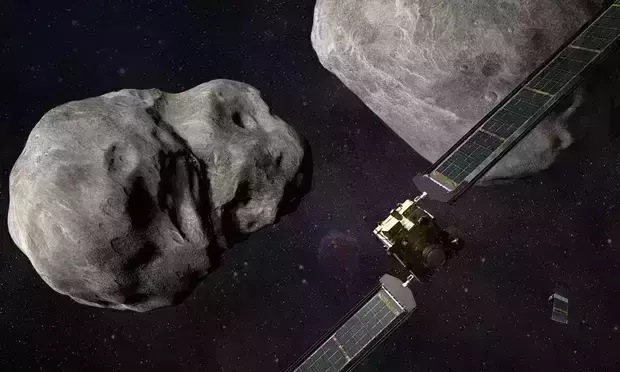
Nasa to slam a spacecraft into an asteroid to turn it away from Earth
text_fieldsA miniaturised satellite will separate from the main spacecraft, enabling images of the impact to be relayed back to Earth. Photograph: Nasa/AFP
The 610 kg Dart spacecraft is scheduled to blast off from the Vandenberg Space Force Base in California onboard a SpaceX Falcon 9 rocket at about 6.21 AM UK time on Wednesday. This mission will be the first time humans are interfering with the gravitational pull of the solar system.
Nasa's Double Asteroid Redirection Test (Dart) mission is also testing out if deflecting an asteroid from its path is a realistic strategy. Scientists will check if an autonomously navigating spacecraft can intentionally collide with an asteroid, reported The Guardian.
Jay Tate, the director of the National Near-Earth Objects Information Centre in Knighton in Powys, Wales, said this is the first step to actually trial a way of preventing near-Earth object impact. If it works, it will prove mankind's technical capability of protecting ourselves.
The mission is targeting a harmless pair of asteroids called the Didymos system. It has a 163-metre "moonlet" asteroid called Dimorphos that orbits a larger 780-metre asteroid called Didymos. These asteroids occasionally pass close to Earth while orbiting the Sun.
Nasa is planning to crash the spacecraft into Dimorphos when the asteroids are closest to Earth, which is about 6.8 miles away. The next such occasion is between 26 September and 1 October 2022.
A mini satellite called the Light Italian CubeSat is attached to the spacecraft. After 10 days of impact, it will detach from the spacecraft and take images and send them to Earth. Scientists will observe from ground-based telescopes and an onboard camera to capture the moments before the collision, reported The Guardian.






















